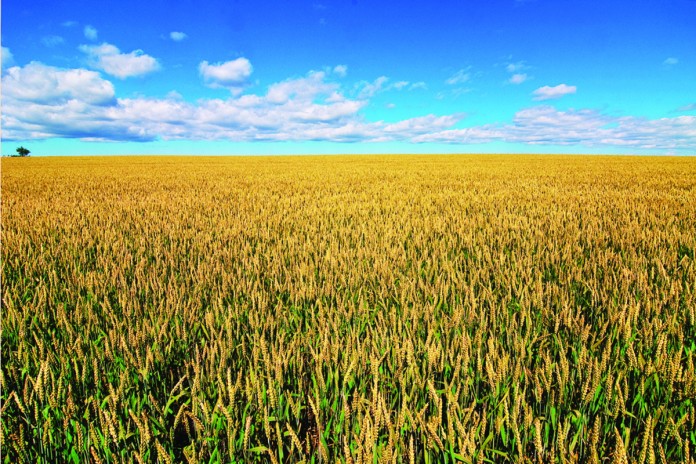Farmland values continue to increase by large amounts each year and have reached record levels in most states in the Midwest, measured by both non-inflation adjusted (nominal) and inflation adjusted (real) values.
Landowners, potential buyers, economists and many others have been evaluating this land boom and have been trying to evaluate whether the bull market is close to being over, and if so, how much of a price correction, if any, will occur.
Some in the business have been predicting the demise of this land bull market for the last two years. Alas, not yet.
The Chicago Federal Reserve District reported the year-over-year increase in farmland values (April 1, 2012 through April 1, 2013) within its district was 15 percent.
Now that isn’t to say that a large northern hemisphere crop with accompanying lower prices and possible lower profits may cool off the land market, but there are other important factors to consider.
Factors
What are the continuing driving forces behind this escalation? Let’s examine a few of the key factors driving farmland values and some factors that may affect these values going forward.
Crop net income has been generally good to excellent for the last six years and is projected to be good again this year (pending fall grain prices). With the potential for a large crop due to large planted acreages, outlook economists have been predicting somewhat lower grain prices (if weather conditions return to a more typical pattern this year i.e. no widespread drought).
With potential surplus supply, how will global demand react? Will lower corn prices stimulate the ethanol industry? Will lower soybean prices stimulate additional buying from China and other developing countries? Will lower feed prices allow for an expansion in domestic livestock production?
This global supply/demand balance will ultimately dictate grain prices in the near term and will be a big driver in profitability.
Costs
The other key factor in crop profitability is cost. How will crop input costs change over the near term?
Fertilizer and rental expense will likely be the input costs with the most near-term flexibility. Due to high margins in fertilizer mining and manufacturing during this previous six-year period, additional infrastructure has been built, or is being planned. This may allow for fertilizer supply to outpace demand and cause fertilizer prices to soften, especially if crop profit margins do weaken.
Although landowners often resist when decreases in cash rental rates are proposed, persistent negative margins (two years-plus) will likely move these rental rates lower … and then again it may take a longer period of negative margins to move these rental rates lower. This is a difficult one to judge.
Land values may continue higher, or only level off, even in the face of diminished or negative profit margins for the average producer. If the most efficient producers continue to see positive profit margins, the land bull market may cool off slower than some are predicting.
Importance of understanding
Predicting crop profits for the next three years is next to impossible with the many different variables in play, but knowing what factors are important in this complex calculation will allow each of us to incorporate those key factors in our decision making process.
Low interest rates have been key in the land bull market and with the Federal Reserve Bank indicating that it will not raise interest rates in the near term, this looks unlikely to be a large factor in a “cooling off” of the land market in the next three years.
Although increased inflation (if it were to occur) would likely cause the Fed to change its tactics.
Farmers balance sheets continue to strengthen. The U.S. Farm Sector Debt to Asset Ratio was 10.6 percent in 2012. This compares to a 14.1 percent Debt to Asset Ratio for the farm sector in 2002.
This strong financial position has been driven partly by an escalation in land values (the denominator in the equation — assets) but few will argue that the farm sector, especially the grain sector, is not in reasonably good “financial health.”
Outside investors are still seeking investment alternatives including farmland. Investors outside of farming are still considering farmland as investment that may add value to their portfolio.
Supply
The supply of farmland is low. Farmland owners have been reluctant to part with this valuable asset and may be seeking the “top” in the market.
Hence, land available for purchase is lower than normal. More dollars chasing fewer acres offered for sale equals higher land prices.
Land isn’t a commodity. We can’t go buy some in Alabama and move it up here to Ohio and plop it down next to our existing farm operation.
Therefore, farmland being offered in your geographic comfort zone (area where you presently farm) might command even more of premium, especially when the farm sector is healthy.
Availability
Land isn’t a frequently traded asset. Land is not offered for sale every year or even every 10 years. There is no law that states it has to change hands every X number of years.
Again, with a relatively strong farm sector, premium bids may be offered if competing farms see a buying opportunity that may not present itself for another three or four generations.
Farmers close to retirement may purchase this land for legacy purposes to secure continued survivability of their farm business.
The key to understanding land values and their possible directions won’t be just to listen to one or two experts tell you which direction the land market is going. Instead, this understanding will hinge on your knowledge of how these key factors and other will affect farmland values.











Its always great news to here that the farmland is increasing. Luckily I have been in the business for years and know what I’m doing. New buyers are coming up and not knowing how to act on land. Its not good to hear that land purchase is lower than usual.